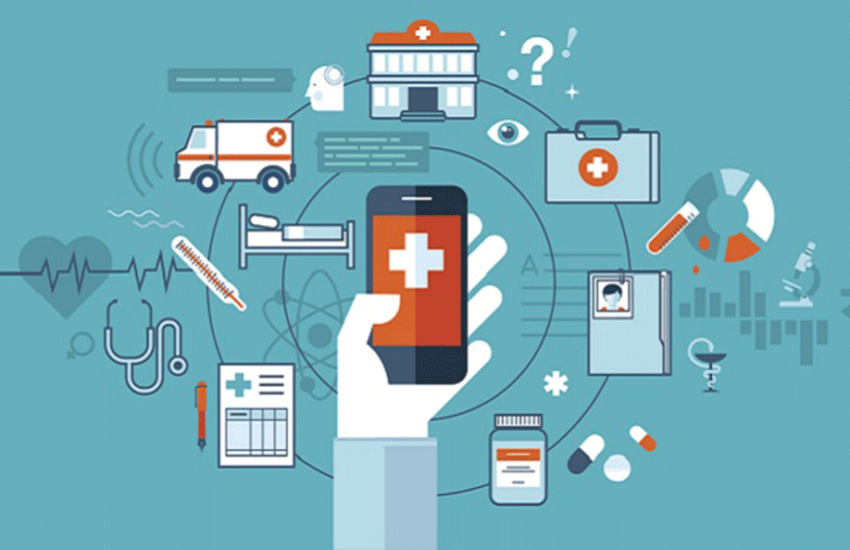The use of mobile handsets and other wireless devices in medical treatment is referred to as “mHealth” in general. The use of mobile devices to notify customers about preventative healthcare services is the most widespread application of mHealth. However, mHealth is also utilized for managing chronic diseases, tracking epidemic outbreaks, supporting treatment, and disease surveillance. In under-served areas with a high population and substantial mobile phone use, mHealth is quickly gaining popularity. The field of mobile health technology, or mHealth, is currently undergoing rapid development and holds the potential to improve healthcare delivery. Mobile health technology, often known as mHealth, has no standard definition because it is a young and developing field. Patients’ health in poor countries can be improved with the help of mobile health technologies.
Despite the potential and widespread adoption of mobile health technologies, healthcare executives still face several problems that require answers. These difficulties include safeguarding the confidentiality of patient data exchanged on mobile devices, guaranteeing the compatibility of mobile health technology with EHRs and other health technology, and identifying the most secure and efficient mHealth apps. mHealth applications are currently being used more and more frequently on tablets, smartphones, and wearable technology. There are countless apps available that can be used for various things, including disease prevention and better health, finding a health diagnosis, filling medicines, healthcare providers, maintaining health compliance, and managing chronic illnesses like diabetes.
The Difference Between mhealth And Telehealth
Telehealth refers to all cases of healthcare delivered through modern technology. In contrast, mHealth refers to mobile self-care. Consumer innovations like smartphone and tablet apps allow users to collect their health data without a clinician’s assistance or interpretation. mHealth is restricted to patient-to-patient engagement, unlike telehealth, which includes clinician-to-patient, clinician-to-clinician, and patient-to-patient interaction, and RPM, which also includes clinician-to-patient and patient-to-patient interaction. mHealth is a user-directed medical technology that falls under the umbrella of well-being, sports, and fitness. While telehealth is more appropriately described as clinician-directed remote patient monitoring technology, it may be helpful to consider it similar to a smartphone app. The line between public health and clinical medical applications is sometimes blurred in mHealth.
The widespread use of mobile phone technology among people worldwide, which allows for significantly improved basic connectivity and connectivity quality, is the first fundamental feature of this technology. More than just a social convenience, mobile connectivity can be quite useful. Simple messaging made possible by the expansion of basic mobile-based access eliminates the need for in-person medical consultations, which lowers health care costs by eliminating the need for transportation and shortening the time it takes to diagnose or refer patients, especially in rural areas where malaria outbreaks are more difficult to control.
Factors Fueling mhealth
Although owning a smartphone is becoming less expensive, and perhaps; as a result, the ownership of mobile phones is rising, there are still disparities in the penetration and adoption of this technology. The technical platform must understand the target population’s adoption trends. A notable facet of smartphone technology is the availability of apps that can be downloaded and installed on the device. Smartphones are fundamentally just a computer with radio communication capabilities. The operations and capabilities of a general-purpose computing platform are thus included in smartphones, allowing third-party developers to create and execute apps that take advantage of the specific device’s functionality. Apps can also be developed to interact with wired or wirelessly connected devices.
Smartphone penetration levels are relatively lower than smartphones because they are a more expensive but more competent subset of the available mobile phone devices, although they are rising quickly due to relative price declines. Concerning health care services, mobile broadband is crucial for gaining access to Internet resources and providing enough bandwidth for data-intensive mobile phone apps, including video, to communicate without the need for or dependency on local landlines. Despite the growing capabilities of mobile phones, attached devices provide a different path to point-of-care availability via mobile technology, enabling local sophisticated data capture by a health care professional by the combined capacity of the attached device and the mobile phone.
The Connection Of mhealth
Over time, the quantity and types of data gathered from and transferred to individuals and groups expand as more people access the Internet or World Wide Web. The potential of mHealth will increase along with the interconnectedness of nearby health-rated devices, complicating its design. Due to the market interposition caused by the rapid development of mHealth technologies, preferred technology self-treatment has partially replaced traditional suppliers of health care services. Given the potential for using mHealth apps for public health, it is important to comprehend the wide range of interconnectivity dynamics currently and most likely will be in play.
There is much opportunity to use mHealth to enhance the provision of health services in low and middle-income nations as collaborations are forming between technologists, governments, non-governmental organizations, universities, and industry. Moving mHealth ideas from pilot projects to scalable national programs while appropriately involving health workers and communities is a major problem, as with many other health improvement initiatives. There is encouraging evidence to show that mHealth can bring improved and enhanced healthcare services to people and communities while aiding in strengthening health systems by leveraging the growing prevalence of mobile phones among various groups.
Conclusion
Innovations in mHealth could theoretically alter how data is utilized in health programs, resulting in quicker, decentralized decision-making and resource reallocation in the future, transforming healthcare. Not only can critical care treatments and procedures be the most expensive medical bills, but normal healthcare prices in many nations are also by no means insignificant. The top and most effective ways to lower healthcare costs for all types of patients have emerged as mHealth apps. A mobile health app frequently serves as a ready-made medical consultation when it provides you with readings of certain health concerns and proposes appropriate treatments. More healthcare professionals and providers are anticipated to enter the mHealth app market as it gains traction.
